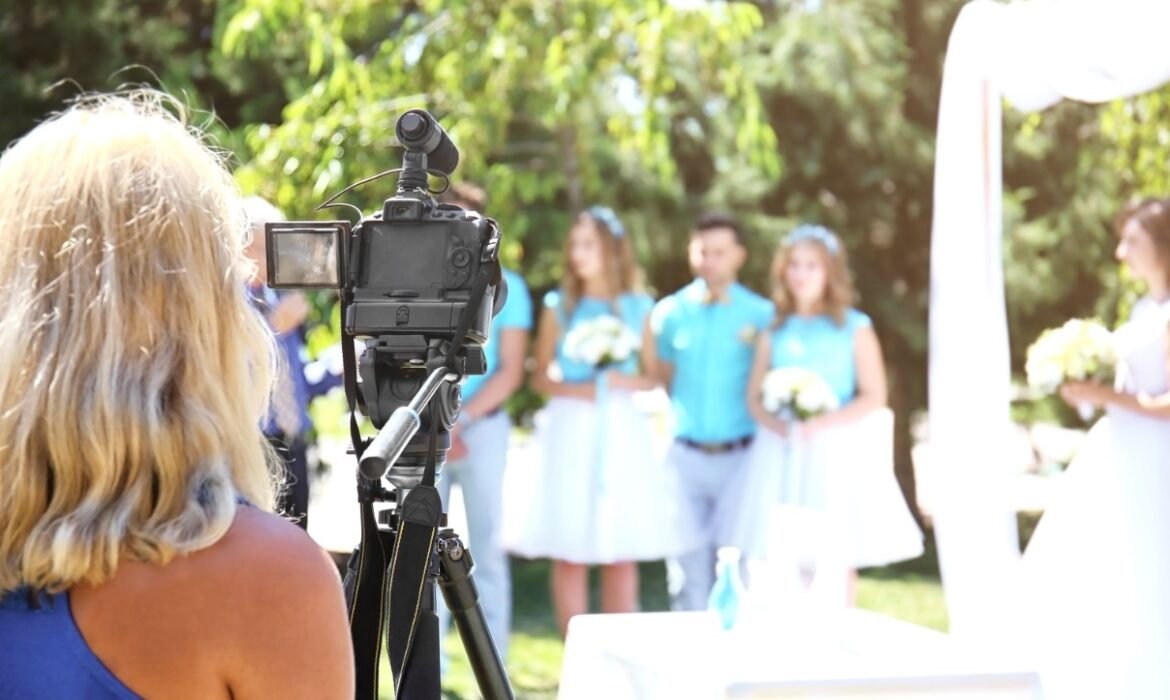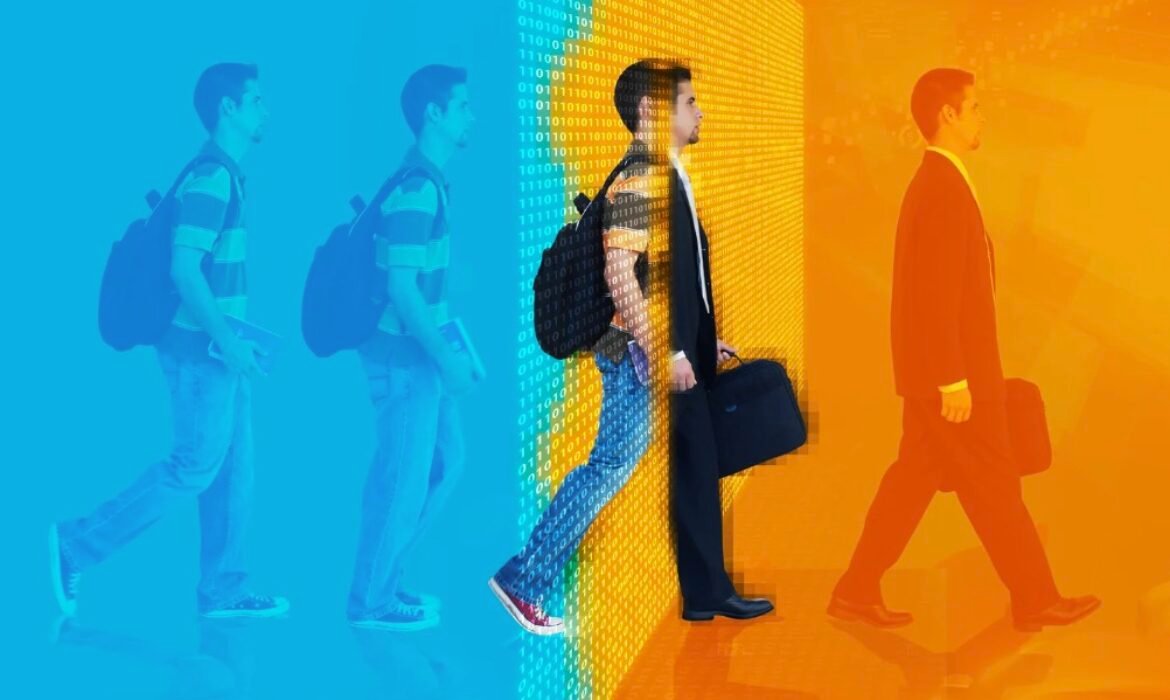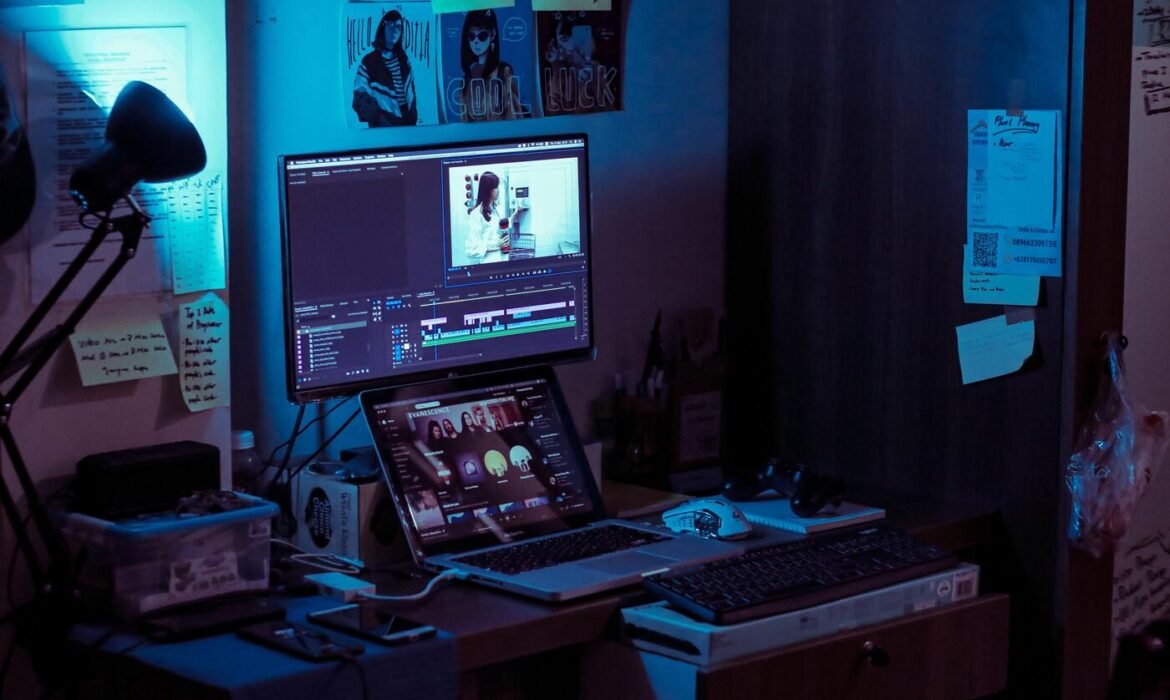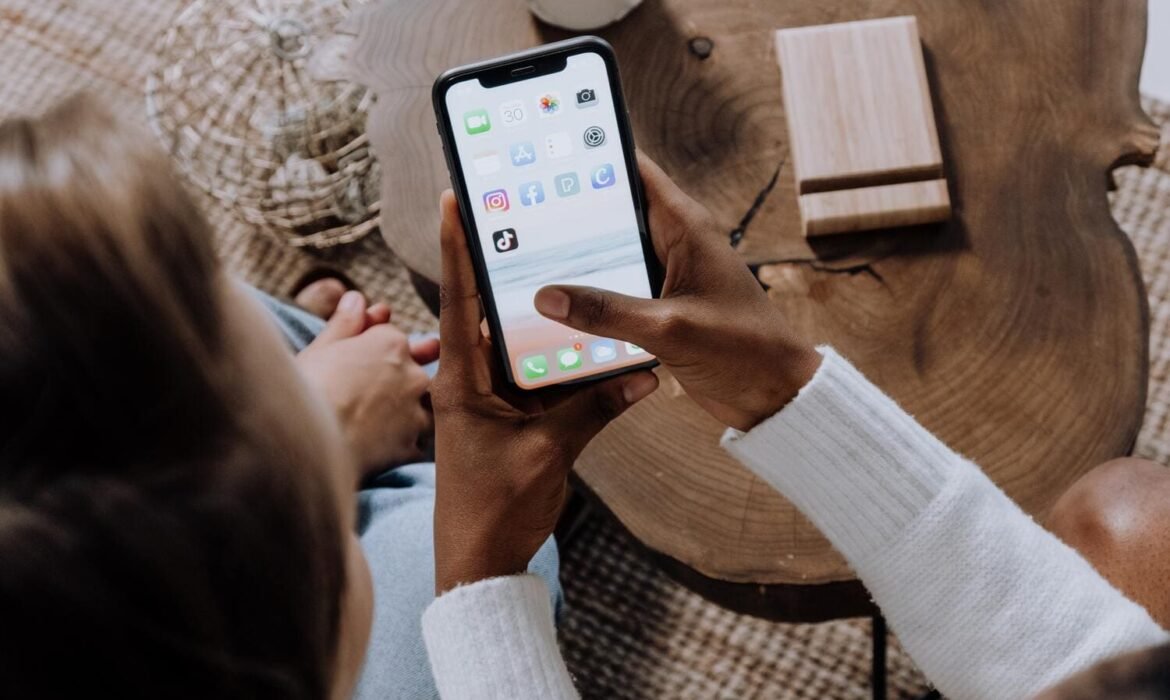The Benefits Of Outsourcing Your Wedding Video Editing To A Professional Editing Service
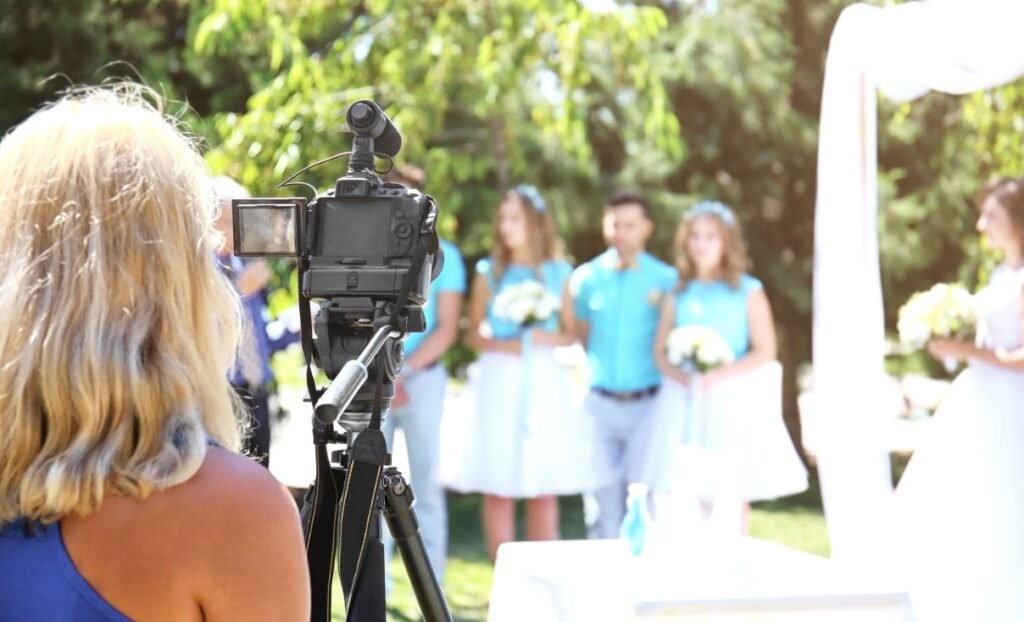
Wedding videos are more than everyday videos. It captures a particular moment in the life of the couple and the family involved. Therefore, it is essential to have professionals handle the editing.
Here, we will look at what outsourcing your wedding video editing is all about, the benefits of outsourcing your wedding video to a professional editing service, and how to choose a professional video editing service. Let’s dive in.
What Outsourcing Your Wedding Video Editing Is All About
Outsourcing your wedding video editing is simply giving it to someone else to edit for you and paying them for their service. Outsourcing video editing means you will still have to do the shooting, but you will send it out to a professional editing service to edit the video.
You should give it to a professional editing service when you outsource your wedding video editing. Professional editing services have the right equipment and team to do top-notch work.
Benefits Of Outsourcing Your Wedding Video Editing
There are lots of benefits that come with outsourcing your wedding video editing to a professional editing service. These benefits are listed and explained in detail below.
It Helps You Focus On The Shooting: No matter how good a professional is, poor video shooting will be reflected in the video at the end of the day. Outsourcing your wedding video to a professional editing service lifts a lot of burden from you and helps you capture the best videos and pictures. You are no longer worried about the video editing you need to do later.
Your Wedding Video Will Be In The Hands Of An Editing Team: This is one great benefit of outsourcing your wedding video editing to a professional service. Your videos will be in the hands of professionals with the right equipment and expertise to do a splendid job. You get to enjoy the benefits of professional editors who would make the work memorable.
It Helps You Meet Deadlines: Outsourcing your wedding video editing to a professional editing service helps you deliver videos to clients on time and without compromising quality. You easily meet deadlines without feeling overwhelmed or endangering your health.
Furthermore, it builds trust in your clients, who can always count on you to deliver promptly.
You Have Time For More Bookings: Outsourcing your wedding video editing allows you to take on more jobs. You can expand your brand, take on more clients or even pursue something you have always wanted to do. More couples booking you for their wedding shoot means more clientele, publicity, and money coming in.

We Can Help You With Professional Video Editing.
Unlimited Revisions – Whatever changes are needed, send them through and we will Fix them.
Fast Turnaround Time – We are always available to meet the tightest of deadlines when necessary.
Risk-Free Trial – Send your first video editing project to us and if you are not 100% happy with the results we produce, you don’t pay!
It Helps You Deliver High-Quality Videos: When taking more clients, many people end up reducing the quality of their work, especially if they need more resources to buy the latest equipment and hire a whole team of professionals. Outsourcing your wedding video editing to a professional editing service comes in here. You do not have to worry about quality; the editing firm will give you the best quality, and your video’s production value will be elevated.
It Is More Affordable Than Hiring A Full-Time Editor: Outsourcing your wedding video editing to a professional editing service saves you a lot of money. It is more affordable than hiring a full-time editor. You get to experience the benefits of professionals without breaking the bank. Considering the quality of work you’d receive, you realize it’s a good deal.
It Improves Your Relationship With Your Clients: Clients remember good work and top-notch service! Especially when it comes to something dear to the heart, like wedding videos. When you deliver a quality job, and you are prompt about it, they will always recommend your business to all their friends and loved ones. Some even become returning clients who want you to handle other projects for them. So get ready for expansion.
How To Choose A Professional Video Editing Service
Yes, having a professional editing service edit your wedding video is great. Nevertheless, you should consider certain things and steps you must take when picking the exemplary service for you. Here is how to choose a professional video editing service.
Check Out Their Portfolio: Do you want a professional editing service to work on your wedding video editing? Check out the portfolio of the editing services you are considering. Professional editing services have worked on jobs in the past and have some available for anyone wanting to hire them. Ask them for wedding video samples.
You can also check out the testimonials of clients who have hired them in the past. You can easily check the quality and professionalism of the videos.
Compare Their Portfolio With Your Wedding Video Ideas: You must compare the samples to your ideas. Nevertheless, these videos must be somewhat in sync with your concept. You want to be sure they can work with the vision you have in mind. Comparing their portfolio with your concept helps you know if they are people you want to work with.
Focus On How Your Project Will Be Managed: Talk to them about your ideas to know if they can do it. Tell them the time frame you have in mind for delivery and get a quote if you like everything you have seen so far. You can now hire them.
Conclusion
Outsourcing your wedding video editing to a professional editing service puts your mind at rest that it is in safe hands. Next time you have a wedding video shoot, consider hiring a professional editing service so your work can go as smoothly as possible. Cut Pro Media offers professional and creative wedding video editing services. This enable you to produce the perfect wedding video that will be cherished for a lifetime. They can assist you in the production of a video that will leave a lasting impression on viewers by utilizing their cutting-edge technology and cutting-edge tools, which will allow for the creation of a video with stunning visuals and incredible sound quality.
How Cut Pro Media editing services Can Help You Transform Your Videos

Video content is gaining importance for both individuals and corporations in the modern world. Videos are a potent method to engage an audience and share a message, from social media postings to marketing efforts. Yet gathering footage is only the first step in making a stunning video; expert editing is needed to turn that raw material into a polished finished product. Here’s where the editing services from Cut Pro Media come in. Cut Pro Media can help you convert your films in a number of ways with the help of their staff of skilled professional video editors and technical know-how. Cut Pro Media can assist in taking your video to the next level and differentiating it from the competition through storytelling, branding, technical editing, and other aspects. In this piece, we’ll examine the ways that Cut Pro Media editing services can assist you in transforming your films into a finished product that is both captivating and engaging.
- Professional editing
In order to produce high-quality video footage, professional editing is an essential step. To produce a polished, interesting end result, it entails the expert selection and organization of footage as well as the integration of special effects, music, sound effects, and other aspects.
Skilled editors are well-versed in the craft of video creation and have years of expertise. They are adept at selecting the greatest segments of your film to include in your finished video because they have a keen eye for detail. Also, they can eliminate any pointless or repetitive material, ensuring that your film flows naturally and engages the viewer.
Professional editors can color correct and color grade your video in addition to choosing and organizing the material to give it a unified appearance and feel throughout your content. In order to improve the whole audio experience, they can also improve the audio quality of your video by reducing background noise, altering volume levels, and adding sound effects and music.
- Color grading
In order to give a video a certain appearance and feel, color grading is a post-production technique that is used to enhance and change the colors and tones. To produce a seamless and aesthetically pleasing end product, the brightness, contrast, saturation, and other elements of the footage must be adjusted.
Color grading has a significant effect on a video’s overall tone and vibe. For instance, although bright and saturated colors can provide a cheery and uplifting tone, subdued and desaturated colors can produce a somber, melancholy tone. Moreover, color grading can be utilized to establish a unified aesthetic across an entire video or series of videos, which can support the reinforcement of your brand or message.
A thorough understanding of color theory and the ability to manipulate the colors and tones of the footage using specialist software are prerequisites for professional color grading. Your audience will be engaged and captivated by a finished result that is cohesive and visually beautiful, which will help you accomplish your video marketing objectives.

We Can Help You With Professional Video Editing.
Unlimited Revisions – Whatever changes are needed, send them through and we will Fix them.
Fast Turnaround Time – We are always available to meet the tightest of deadlines when necessary.
Risk-Free Trial – Send your first video editing project to us and if you are not 100% happy with the results we produce, you don’t pay!
- Audio enhancement
A post-production method called audio enhancement is used to increase a video’s audio quality. It uses a variety of methods to improve the sound, such as reducing background noise, altering volume levels, and adding music and sound effects.
One of the most popular methods for audio improvement is background noise removal. Wind or traffic might detract from the video’s message and make it more difficult for viewers to interact with the content. A balanced and constant audio track throughout the video can be achieved by adjusting the volume levels. To avoid distortion, this may entail boosting the audio’s quieter passages or muting its louder ones.
A video’s audio quality can be improved by adding sound effects and music. While music can help build the mood and tone of the content, sound effects can be employed to highlight particular actions or occurrences in the movie.
A vital stage in producing high-quality video footage is audio improvement. You may provide your viewers a more impactful and engaging experience by enhancing the audio quality of your films, which will help you accomplish your video marketing objectives.
- Motion graphics
A post-production method called motion graphics is utilized to give video content more context and visual appeal. These are often visual components that can be utilized to enhance branding or transmit information throughout the film, such as text overlays or animated logos.
A video can be made more visually appealing and more effective in communicating difficult concepts or data by using motion graphics. For instance, animated infographics or charts can aid in graphically representing statistical data, while text overlays can be utilized to highlight crucial details or give the film meaning.
Professional motion graphics need sophisticated software and a talented motion graphics designer who can produce eye-catching designs that are pertinent to the video’s subject matter. Motion graphics can improve a video’s quality and give the viewer a more interesting and lasting experience when used effectively.
Motion graphics are a potent tool for increasing a video’s visual impact. They can support branding and improve the communication of complicated ideas.
- Video optimization
In order for video material to look good and function properly across many platforms and devices, it must be adjusted and formatted. In order to make sure that the video appears fantastic on any screen, this may include producing many versions of it with various resolutions, aspect ratios, and file sizes.
Because different platforms and devices have varied needs for video playback, optimizing videos is essential. For instance, social media networks can need shorter videos with text overlays or subtitles to draw users’ attention as they are browsing through their feed.
In order to increase search engine exposure and assist the video rank higher in search results, video optimization can also involve optimizing the video’s metadata, such as the title, description, and tags.
A thorough understanding of video codecs and encoding methods, as well as familiarity with the particular needs of various platforms and devices, are necessary for professional video optimization. By optimizing your videos, you can make sure that they look great, function well, and eventually aid in the accomplishment of your video marketing objectives.
- Improved pacing and flow
The main advantages of using Cut Pro Media editing services are improved pacing and flow. This is how they can assist:
- Eliminate superfluous footage: Having too much superfluous footage is one of the most frequent causes of bad pacing. The editors at Cut Pro Media can look through your video and cut out any segments that don’t advance the theme or plot.
- Rearrange the scenes: The rhythm and flow of a video can often be affected by the sequence in which the scenes are presented. The editors at Cut Pro Media can rearrange sequences to make a more logical development and maintain the viewer’s interest.
- Include transitions: Transitions can make cuts between scenes more fluid and improve the watching experience. The editors at Cut Pro Media have access to a wide range of transitions, from straightforward cuts to more intricate effects like dissolves and wipes.
- Modify the tempo inside scenes: Cut Pro Media’s editors can modify the pacing within specific scenes by reducing film, adding cuts or crossfades, or accelerating or decelerating the footage.
- Including B-roll: B-roll is extra video that can be utilized to break up scenes and give context or aesthetic appeal. To keep viewers interested and produce a more dynamic video, Cut Pro Media’s editors can include B-roll.
The editors at Cut Pro Media have a variety of tools and methods they can employ to enhance the pacing and flow of your movie. You may make a video that engages viewers from the very beginning by working with them.
In conclusion, anyone wishing to transform their movies can benefit from using the editing services offered by Cut Pro Media. A wide range of editing chores, from straightforward trimming and arrangement to intricate color grading and special effects, can be assisted by their staff of qualified editors and technical experts. With their assistance, you can produce a polished and well-executed finished piece that engages your audience, tells a fascinating tale, and accurately represents your brand’s tone and messaging.
The Role of Communication In the Successful Outsourcing of Video Editing

Outsourcing video editing may be an intelligent flow for plenty of motives, value savings, admission to specialised abilities and know-how, and extended performance. Nonetheless, the success of outsourcing video editing relies upon excellent communication between the outsourcing enterprise and the video editing studio. In this article, we are able to analyse the role of communication in the successful outsourcing of video editing, with a focal point on Cut Pro Media studio for outsourcing video editing.
Understanding the Client’s Needs
Understanding the client’s needs is one of the most crucial elements of successful outsourcing. This involves a deep understanding of the project goals, timeline, budget, and any specific requirements or preferences. Cut Pro Media has developed a process to ensure that we fully understand our client’s needs before beginning any work.
The initial consultation is the first step in this process. Cut Pro Media closely collaborates with the client to comprehend their needs and goals during this consultation. We provide guidance on best practices for video editing, including advice on on-camera work, lighting, and sound design. This consultation is essential to ensure that the final product meets the client’s expectations and produces the desired results.
Clear and Consistent Communication
Clean and constant communication is essential to fulfilling any outsourcing dating, and video editing isn’t an exception. Cut Pro Media knows the significance of a clear communique, and we have evolved a conversation method that guarantees that clients are constantly informed and worried about the editing technique.
One element of this procedure is regular updates on the project’s progress. Cut Pro Media offers regular updates to clients on the status of the editing technique, including any demanding situations or issues which can arise. This ensures customers are usually informed and might offer feedback and steering as wished.
Any other crucial thing in conversation is using clean and concise language. Cut Pro Media ensures that all verbal exchange is straightforward to recognise, avoiding technical jargon or enterprise-specific language that can confuse customers. This ensures that clients are informed and may offer meaningful remarks and guidance.

We Can Help You With Professional Video Editing.
Unlimited Revisions – Whatever changes are needed, send them through and we will Fix them.
Fast Turnaround Time – We are always available to meet the tightest of deadlines when necessary.
Risk-Free Trial – Send your first video editing project to us and if you are not 100% happy with the results we produce, you don’t pay!
Collaboration and Feedback
Effective communication is not just about providing facts; it’s also approximately collaboration and remarks. Cut Pro Media understands the significance of collaboration and remarks inside the video editing manner, and we inspire customers to be worried and offer remarks all through the editing manner. One manner in which Cut Pro Media helps collaboration and feedback is through the usage of online equipment.
Clients can evaluate and provide feedback on the video editing work and the usage of online equipment, which makes it easy to provide feedback and track editing. This ensures that clients are apprehensive about the editing system and that their feedback is incorporated into the last product.
Another way that Cut Pro Media facilitates collaboration and feedback is through everyday check-ins and critiques. We encourage customers to timetable regular test-ins to study the development of the undertaking and provide feedback on the editing work. This ensures that customers are constantly informed and concerned about the editing method.
Managing Expectations
Managing expectations is vital to successful outsourcing, and Cut Pro Media knows the significance of handling expectations during the video editing procedure. We offer realistic timelines for the assignment and ensure clients are privy to any capability challenges or delays that can stand up.
Similarly, Cut Pro Media is transparent about its process and provides clear guidelines for customers on what to expect at some stage in the editing method. We are also attentive to any questions or issues clients may have and work to deal with those troubles as quickly as possible.
Quality Control
Quality control is any other vital component of successful outsourcing, and Cut Pro Media takes this duty significantly. We’ve developed a first-class control procedure that guarantees that every editing video work meets excessive requirements for excellence.
This quality management technique includes reviewing all video-editing work earlier than its miles brought to the purchaser. Cut Pro Media ensures that each editing is error-free, meets the patron’s expectancies, and is of the best exceptional viable. We also employ experienced video editors with the competencies and expertise to supply excellent video editing work.
Conclusion
In conclusion, the successful outsourcing of video editing depends on a robust conversation between the outsourcing organisation and the video-editing studio. Cut Pro Media has developed a procedure to ensure we completely understand clients’ needs and may deliver terrific video-editing work that meets expectations.
Clear and consistent communication is vital to the success of any outsourcing relationship, and Cut Pro Media is familiar with the importance of this. We provide everyday updates, use clear and concise language, and facilitate collaboration and comments at some point during the editing technique.
Dealing with expectations and ensuring pleasant control is likewise essential to the success of Cut Pro Media Studio has evolved methods to make sure that both of these are treated effectively.
By means of following those fine practices, Cut Pro Media has turned out to be a depended-on studio for outsourcing video editing work, delivering remarkable work that meets their client’s needs and expectancies.
Why Post-Production Outsourcing Is Key To Meeting Tight Deadlines And Delivering High-Quality Work
As a video editor or content creator, creating high-quality videos for your audience or clients is essential. Consistent and quality video content output is the most effective way to generate leads. Therefore, you should meet deadlines and not reduce the quality of the work.
Post-production outsourcing to a professional is one of the most intelligent decisions you can make. This article will discuss the importance and benefits of post-production outsourcing. Let’s dive in.
Importance Of Post Production Outsourcing
There are many benefits of post-production outsourcing. These benefits are explained in detail below.
It Gives You Access To Experts
Outsourcing the post-production process can be a great way to guarantee a high-quality final product for your film. By contracting out post-production services, you gain access to skilled experts who are up-to-date on the most cutting-edge tools and methods, allowing you to focus on developing a polished final product. This not only helps you save time and money, but it also guarantees that your project will be completed flawlessly. Hiring professionals to handle the post-production of your project ensures that your final product will look its best by making the most of each frame.
It Reduces the Burden And Stress
Outsourcing post-production work is a powerful strategy for any company in the modern digital era. It lessens the time and effort required to complete tedious post-production tasks. Businesses can save resources and focus on core competencies by outsourcing post-production services such as editing, encoding, transcoding, and color correction. Companies can ensure the timely and high-quality completion of post-production projects by contracting with experts in the field to perform the necessary work. This aids them in maintaining competitiveness in a dynamic market.
It Helps You Meet Deadlines
Any media production would be complete with post-production. Video and audio are processed using editing, mixing, and mastering. You can save money, work more efficiently, and meet deadlines by contracting out post-production services.
By handing off the technical aspects of your project to experts through post-production outsourcing, you can free up valuable time and resources to devote to the more imaginative aspects of your work. Thanks to this, you’ll be able to meet your deadlines without sacrificing quality. In addition, when you outsource post-production services, you gain access to professionals with the necessary experience and expertise. This guarantees that your project will be finished on time and to the highest standards.

We Can Help You With Professional Video Editing.
Unlimited Revisions – Whatever changes are needed, send them through and we will Fix them.
Fast Turnaround Time – We are always available to meet the tightest of deadlines when necessary.
Risk-Free Trial – Send your first video editing project to us and if you are not 100% happy with the results we produce, you don’t pay!
It Builds Trust In Your Clients
Outsourcing post-production tasks is becoming increasingly common among organizations, and it is widespread among companies under pressure to create high-quality work within short time frames. By contracting out post-production work, businesses can ensure that their customers receive work of the highest possible quality within the allotted time frame. This will ensure that your clients are happy with the results of your labor and increase their trust in your business.
You will be able to concentrate on the most important components of your project when you outsource the post-production work to seasoned specialists, making it easier for you to fulfill your deadlines. Thanks to this method, you will be able to deliver work of excellent quality and on schedule by ensuring that all aspects of your project are finished correctly while maximizing productivity.
It Establishes You As An Expert In Your Field
Videos are currently in the digital space, and clients are looking for an expert who consistently delivers high-quality videos. Post-production outsourcing makes you that brand all the clients want. When you outsource post-production activities to experts, you can trust them to do a quality job. This will make you remain relevant in the highly competitive market.
It Gives Scalability
Post-production outsourcing is key to meeting tight deadlines and delivering high-quality work. It provides scalability, allowing businesses to increase their production capacity without investing additional infrastructure or personnel. Outsourcing post-production can help companies to save time and money by allowing them to focus on their core competencies while leveraging the expertise of experienced professionals specializing in post-production services. Furthermore, outsourcing post-production enables businesses to keep up with changing customer demands and market trends to remain competitive.
Post-production outsourcing is becoming increasingly popular among businesses that must meet tight deadlines and deliver high-quality work. Companies are turning to Cut Pro Media, the best post-production outsourcing services provider, to help them manage their post-production needs. Cut Pro Media offers various services, from editing and color grading to sound design and audio mixing.
Why Production Outsourcing Is The Key To Meeting Deadlines And Delivering High-Quality Work
Businesses that care about meeting deadlines and delivering quality work are increasingly turning to production outsourcing. When companies outsource their production duties, they can save time and money without sacrificing quality or meeting deadlines.
Companies can use the time and energy freed up by outsourcing production tasks to concentrate on strategic initiatives like product and service development. By keeping up with the most recent developments in their field, they can ensure that their products and services are always ahead of the curve. They may also save money that would have been spent on new employees or on retraining current workers to use the latest equipment or methods.
Conclusion
You can enjoy high-quality jobs, meet deadlines, and business expansion when you outsource post-production activities. And you can do it all without breaking the bank. To enjoy the benefits listed above, outsource your post-production needs to a firm that can meet those needs.
With the help of Cut Pro Media’s experienced professionals, businesses can ensure that their projects are completed on time and with high-quality results. Their team of experts will guide you through the entire process from start to finish so you can focus on other aspects of your business while they take care of the post-production needs.
Is Hiring a Video Editor Worth It?
Is Hiring A Video Editor Worth It?

In today’s world, a video is a powerful tool for businesses of all sizes. From social media to online marketing, video has become an essential element of modern communication. But, creating high-quality video content can take time and effort, especially if you need to be an experienced video editor. So, is hiring a video editor worth it? The answer is a resounding yes.
First of all, hiring a professional video editor can save you a significant amount of time. Video editing is a complex and time-consuming task, and it’s essential to have an experienced editor to handle the technical aspects of the process. A professional video editor can take care of everything, from capturing footage to editing, colour grading and final delivery. This will free up your time to focus on other important aspects of your business, like networking, marketing, and social media.

We Can Help You With Professional Video Editing.
Unlimited Revisions – Whatever changes are needed, send them through and we will Fix them.
Fast Turnaround Time – We are always available to meet the tightest of deadlines when necessary.
Risk-Free Trial – Send your first video editing project to us and if you are not 100% happy with the results we produce, you don’t pay!
Another advantage of hiring a video editor is that they can help you create high-quality, professional-looking videos that stand out from the competition.
A professional video editor knows how to use the latest video editing software, and they understand the technical aspects of video production. They can help you to create videos that look great, and that will appeal to your target audience.
When it comes to hiring a video editor, Cut Pro Media is the best option for your business. We are a team of professional video editors who specialise in wedding, commercial, and real estate video editing. We have a strong portfolio and six years of experience in hundreds of video editing projects. Plus, we do it at a price that you are comfortable with. We are the only company that can deliver consistently high-quality videos that are fast and affordable.
In conclusion, hiring a professional video editor is worth it, and Cut Pro Media is the best option for your business. We save you time, improve the quality of your videos, and increase your chances of reaching a larger audience. Don’t take our word for it; check our portfolio, explore our services, and start working on a project with us. We assure you that you won’t regret it.
Related Articles:
5 Reasons To Use The Slow Motion Effect In Your Video
5 Reasons To Use The Slow Motion Effect In Your Video
5 Reasons To Use The Slow Motion Effect In Your Video

When you’re watching a video, you’ll find that many good videos include the slow-motion effect. Sometimes, this exaggerates a particular action (especially in comedy videos). Other times it does add suspense and focus to the video. Of course, you don’t want to overdo it because, as with everything, it can detract from the subject of the video itself. However, the slow-motion effect can be a significant emphasis, especially when the issue of the scene, or video, is highly emotional and will really keep your audience watching your video. So, here are five reasons to use the slow-motion effect in your video.
1. It Adds Suspense
One of the main reasons you want to add slow motion to your video is that it adds suspense to the scene, especially if it’s highly charged and highly emotional. Think about all the horror films that have graced our cinemas, TVs, computers, and phones. The suspense often lies in the bated breath of the victims or main characters as the monster or villain is chasing them. Then when they’re about to be killed, the action is slowed even further. This gives the audience one last glimmer of hope before the final blow strikes. This is one of the ways where slow motion can add suspense to a video.
Alternatively, you can add slow motion to a highly moving or romantic scene, for example, in wedding videos, proposal videos, or even a romantic movie. You’ll generally get a close-up of one of the couple’s faces, and as they look up or towards the camera, the audience can see the moment they realise that the person in front of them is the one they love. You can see the anticipation and expectation on their face just before they finally take a look at their lover. Although it will be an instant for them, we can analyse every movement showing the love and awe they feel as they look at their partner (sometimes) for the first time.

We Can Help You With Professional Video Editing.
Unlimited Revisions – Whatever changes are needed, send them through and we will Fix them.
Fast Turnaround Time – We are always available to meet the tightest of deadlines when necessary.
Risk-Free Trial – Send your first video editing project to us and if you are not 100% happy with the results we produce, you don’t pay!
2. It Creates Focus
Another excellent use for slow motion is to create focus, particularly in a moving scene. This is an excellent technique that product videos use because it forces their audiences to focus on the product that’s being showcased. So, think about a pizza advert that might come up on your TV. The action in the scene may start fast, but after a second, the movement slows down, even so much as to look like it has stopped. This allows the audience time to drool over the stringy cheese that comes off the pizza as it’s being pulled away from the larger pie. Again, it’s a great technique used by advertisers to create the “want” in their target audiences.
It can also create focus during high-intensity action scenes. So, if your main characters are in the middle of a gun shootout or a car chase, you can direct your audience’s attention to one particular action, like the bad guy’s bullet just barely missing the excellent guy’s head. Or the clumsy sidekick’s misfire hitting one of the bad guys’s henchmen. Slow motion in these shots can help create that delayed gratification that audiences look for when watching an action movie. They know the good guys will win, but just like with horror films, audiences like to hold their breath during that adrenaline rush.
3. It Can Reveal Misdirection
Slow motion can reveal misdirection, especially in films and TV shows about crime, magicians, or both! In each case, slow motion helps reveal what is really going on behind a misdirection. So, think about those magic shows, where a magician locks his assistant in a box, then stuffs it full of blades. We don’t see what’s actually going on inside the box but using camera movements and slow motion can help reveal to the audience exactly what is going on inside and behind the box. So, from the front, it may seem like the blades are piercing the assistant, when actually, she’s contorting herself to avoid them, or she’s literally outside and behind the box, while the magician is stabbing empty air.
Similarly, in crime films and TV, slow motion, along with some careful special effects, the audience can see how a crime takes place, and analyse each step, as the detective, or the criminal reveals how it was done. Essentially, by changing the angle of the camera, during the slow motion, the true crime is revealed. Of course, this usually requires advanced editing and filming techniques, so if you’re looking to create this type of show or film, you’ll need to speak with your editor, to ensure they can create this illusion.
4. It Adds Depth To A Scene
Similar to using slow motion for revealing misdirection, slow motion can add depth to a scene, especially during an action shot. So, for example, if we’re following a car chase, the sidekick might mention that another obstacle is in front of them, despite the good guy being busy, but for comic relief, the sidekick then forces the good guy to acknowledge the obstacle. It is during this shot that the slow-motion effect can be used. Coupled with advanced filming techniques, this creates a depth to the shot that normally wouldn’t be seen. Since it’s crossing a distance.
Another way slow-motion can add depth to a scene is by employing almost freeze-frame techniques. So, if the video is a “whodunnit” mystery, then by slowing down the scene, to the point where it’s almost a freeze frame, and superimposing the detective, as he’s walking through his thought processes, will add a depth to the scene, since it almost seems like he’s breaking the fourth wall.
5. It Gives The Audience Time To Analyse The Action
Slow motion is usually meant to analyse the aspects of an action that takes only a moment to happen, like a gunshot, or the change of someone’s facial expressions (from nervous to happy, or from happy to angry, etc.). In real life, these actions take less than a second to happen, but in film and TV, they can take ten seconds, maybe more, thanks to the slow-motion effect. And in these extra seconds, the audience can analyse every nuance that shows the moment the change happens. So, when slowed down, the audience can see the moment the bullet hits its target and analyse just how impactful that bullet can be.
Alternatively, they’ll be able to see the moment the person’s expression starts to change. So, for example, if we’re watching a groom seeing his bride for the first time, you can see the moment his eyes land on his bride, and the gradual change in his face, as he realises just how beautiful his bride is. As an audience, we love to analyse these moments, because they’re so full of nuances that make them up, and we can identify with each one of them, which them makes the viewing experience more pleasurable. And if one of these nuances are left out, the realism in the shot is gone. So, it’s important to add these moments, to highlight the important aspects of a film.
Add Slow Motion To Your Videos
Adding slow motion to your videos is a simple technique, but of course, this can be enhanced with other filming and editing techniques, and it is these techniques which require a more professional hand. So, why don’t you trust Cut Pro Media do all of that for you! Our dedicated team of editors are professionals in what they do, and you can be sure that they’ll be able to make those dreams reality. They’ve had years of experience, and know exactly how to manipulate a film, so that yours will be the best it can be. Not only that, but if you’re not entirely satisfied, we’ll give you your first edit for free! Check out our website for more information, and if you have any questions, just ask! Our customer services team are online 24/7, so no matter what time of day it is, you’ll always be able to speak to someone.
Related Articles:
What Are Cinematic Black Bars & How To Use It Correctly
What Are Cinematic Black Bars & How To Use It Correctly
What Are Cinematic Black Bars & How To Use It Correctly

Photo Credits – https://www.adobe.com/creativecloud/video/discover/cinematic-black-bars.html
When you watch a film at the cinema, it’s not so obvious or noticeable, but when you’re watching a film or TV show on places like YouTube or social media, you’ll find black bars either on the sides of the video or on the top and bottom parts. These black bars vary in size and give the video a certain look, but what are these bars, and why are they used in them? Don’t worry, we’ll tell you everything you need to know about them, and how to use them correctly in your videos.
What Are Cinematic Black Bars?
Cinematic black bars are, essentially, the black lines or areas you see in videos that either line either side of the video, or the top and bottom parts. They aren’t usually very big, but if you watch a clip of an old movie on YouTube, you’ll find that it will have those black areas. Not only that, but these areas will be a different size for each clip that you see. That’s what cinematic bars are. They essentially help a video fit a screen if the video itself doesn’t exactly fit the screen.

We Can Help You With Professional Video Editing.
Unlimited Revisions – Whatever changes are needed, send them through and we will Fix them.
Fast Turnaround Time – We are always available to meet the tightest of deadlines when necessary.
Risk-Free Trial – Send your first video editing project to us and if you are not 100% happy with the results we produce, you don’t pay!
Why Do Videos Have Cinematic Black Bars?
The reason these are used nearly everywhere is that there are many different screen sizes all over the world, and films need to adapt to these sizes so that they fit. This adaptation is according to the “aspect ratio” of the screen, meaning the size of the screen. Not only that, but without these cinematic black bars, the video will become distorted, when they are resized to fit the screen. So, the black bars are used to help with preventing the video from distorting, or from being cropped when they’re being made to fit a screen.
For example, if your video has been sized to fit a UK screen aspect ratio, which is usually at a ratio of 16:9, but you need to readjust it, to fit a US screen aspect ratio, which will be 2.39:1, then adding cinematic bars to your video will ensure that the video will fit those screens. Not only that, but nowadays, filmmakers and broadcasters are starting to display films and videos at a 2:1 aspect ratio. So, many videos that are filmed on an old camera will need to add cinematic black bars, so that the video can fit.
Why Would You Add Cinematic Black Bars To Your Video?
There are many reasons why you’d want to add cinematic black bars to your video, like giving your video a certain look. For example, if you want your video to look more cinematic, you’d add black bars to the top and bottom of your video, since many cinemas use widescreen technology, and sometimes their aspect ratio can be as wide as 4:1, which is usually used in IMAX cinemas. Alternatively, if you want your video to look more retro, then you’d most likely use a 4:3 ratio, which will give your video a squarer ratio. So, if you’re looking for a certain look for your film, you might want to add black bars to it.
Is There Really A Right Way and A Wrong Way To Add Them?
There is a right and wrong way to add black bars to your video, because if you add the wrong template, you’ll find that your black bars will have some “noise” in them. Essentially, they won’t be as black, or as crisp as black bars should be, and this is noticeable, especially if you upload your videos to YouTube, Vimeo, or even social media like TikTok, Facebook and Instagram. Simply adding a cinematic black bar graphic over the top of your video, will mess with the codec of the video, since the aspect ratio of your video will be automatically adjusted during the exporting process and uploading process.
So, if you want to add cinematic bars to your video, the best way to do that is to record your video in the aspect ratio you want and then reframe the video, while you’re editing, if it isn’t in the aspect ratio you want. Using black bar templates or premade graphics, will add unnecessary noise to your video, and will be noticeable to even your viewers. That’s why, you should edit your video into the aspect ratio you want and let your viewer’s media player add the cinematic bars automatically. Of course, if you’re showing an edit draft to a client, you may want to use cinematic black bar templates, just so they can see what the final product looks like, but eventually, you’ll need to remove the template, so that it doesn’t add unnecessary noise to your video.
Take The Fuss Out Of The Process
The process of adjusting your video’s aspect ratio can be tiresome and tedious. After all, you’ll need to go through a lot of trial and error, to know exactly how to add cinematic black bars onto your video. So, why don’t you trust a professional, who already knows. We cat Cut Pro Media have teams of experienced video editors, who know the differences between aspect ratios, and how to add them to your video, so you don’t have to. With their expertise and our dedicated customer services team, you can be sure your videos will be edited to the highest standards, with that all-important cinematic look, or even retro look, or however you want it.
Not only that, but you can bet our prices are reasonable, and worth the service. And, if this is your first video with us, and you’re not happy, you can get your first edit for free! There are no hidden charges or fees! You can ask our video editors to match the style you want, whether you’ve edited your own videos before, or you’re taking inspiration from other filmmakers, you can be sure we’ll do our very best to match your examples. So, why not check out our website? Take a look at our price packages and if you’re still not sure, contact our customer services team for more information. Trust us, you won’t be disappointed!
Related Articles:
5 Things You Need To Tell Your Video Editor
5 Things You Need To Tell Your Video Editor
5 Things You Need To Tell Your Video Editor

There are many things you might want your video editor to understand before they start editing your video, but sometimes, all this description and detail may confuse your video editor, they may not know where to start. So, break it down into 5 simple points. These points will help your video editor build your edit with a solid foundation. After that, you can add whatever extra content or requests you have. But what are these 5 points, you ask? We’ll explain them to you and tell you why you need to let your editor know.
1. How Much Footage You Have
One of the major things you need to tell your video editor is how much footage you’ve recorded. That way, your editor will know what to expect, when you send them your files. Sometimes, leaving out how much footage you have will make the task more daunting for your editor, because they may expect a certain amount, and you might not have enough, or you may have too much. So, tell them how much footage you have. That way, you might not find yourself with an unexpected message from your video editor.
So, first, tell them how much footage you have. You don’t need to be too specific. You can tell them the overall amount of data your footage takes up, so they’ll have some idea of how much footage you have. Alternatively, you can make a summary of how many pieces of footage you have for each scene or sequence in your video. You may even want to provide a storyboard of what you expect the video to look like so that it will make it a little easier for your video editor to piece it together.

We Can Help You With Professional Video Editing.
Unlimited Revisions – Whatever changes are needed, send them through and we will Fix them.
Fast Turnaround Time – We are always available to meet the tightest of deadlines when necessary.
Risk-Free Trial – Send your first video editing project to us and if you are not 100% happy with the results we produce, you don’t pay!
2. What Kind Of Video do You Want It To Be
While you might think your footage is enough to explain what you want your video to be, it actually doesn’t. You could send all this footage to your video editor, and they’ll still ask you what kind of video you want. The reason why is that your footage can be made into nearly anything. For example, if you’ve ever watched those videos on YouTube where films were made into separate trailers for different genres, you’ll know what we mean. Your footage can be made into any type of video your video editor will want to make it into.
That’s why you need to tell your video editor what kind of video you want. If you want a product commercial, tell them you want a product commercial. If you want a corporate training video, tell them! This will help your video get an idea of what you want as an end result. It also wouldn’t hurt to give them examples of these types of videos. You may even want to send links to those videos, to your video editor, so they have something to reference.
3. Where Your Video Will Be Displayed
Knowing where you’re going to be showcasing your video can be a very important factor for your video editor. This is because it affects not only the quality of the export of your video, but also the frame rate. Essentially, if you’re uploading the video online, your video’s quality will be compromised, even if you upload it with a 4K resolution. The reason why is that the Internet isn’t yet built to accommodate this type of video. Of course, some platforms might be able to, like YouTube or Vimeo, but for the most part, online streaming isn’t developed enough to showcase higher than 4K resolutions.
So, if you’re expecting a 4K+ resolution to your video, know that only you and your video editor will be able to see it. Unless you’re displaying the video on a 4K+ monitor, or you’re exhibiting the video from your own computer or a USB stick, you won’t get the highest resolution, of your video. So, tell your video editor where you’re showcasing your video, both of you know what to expect, when it comes to the export of your video.
4. Does Your Footage Need Colour Correction/Colour Grading
One of the biggest factors that makes a video look professional is the colour correction or colour grading of the overall look. Sometimes, leaving a piece of footage as it was recorded can make the final edit look amateurish, and while, for many online vlogs and videos, this may be an aesthetic that creators want, it isn’t the same story for other professional filmmakers. You need to let your video editor know if you want your video to be colour-corrected, or even colour graded.
The reason why is not only will it help your video look more professional; it also requires a set of certain skills, to colour grade a video edit, to look a certain way. After all, your video editor will need an eye for colour detail and will need to know how to work colour levels and wheels, to make your video stand out. So, make sure you tell your video editor what you expect the colour palette of your video to look like, and how vivid you expect it to be, because it will add to the final look of your video.
5. What Music You Want In Your Video
Lastly, you need to tell them what music you want. If you already have your own compositions, and pieces, include them in your folder, and let your editor know in which scenes you want this to be. Otherwise, you’ll be left with a bland video, with voiceovers or dialogue that won’t capture your audience’s attention. Music is what ties a video together. So be sure you tell your video editor what kind of music you want in your video.
Take a look at those “different trailer, one movie” videos on YouTube again. You’ll see that with each genre, or mood, of videos, there are different types of music. They add to the atmosphere and tone of the video. So, for upbeat romantic comedies, you’d expect a light-hearted melody. Or for sad movies, you’ll expect slow and emotional soundtracks. For action films, you’d expect a driving and high-intensity piece. That’s why it’s important you know what type of music you want, because it’ll dictate the pace of your video, and its atmosphere.
Related Articles:
An Intro To All Video File Formats
What You Need To Smoothly Edit 4K Videos
What You Need To Smoothly Edit 4K Videos

For many of us, a computer or laptop is a life-long friend. In fact, some of us may have computers that are at least 10 years old! And investing in a new one can be a pain to go through, so you just stick through it, and update the software, other hard drives and hardware. But this can make editing videos challenging, especially if you’ve been handed terabytes worth of 4K video footage. So, how do you cope? What do you need to smoothly edit 4K videos? Don’t worry, we’re here to help. From actual added hardware and graphics cards to using proxy files and software, we’ll tell you what tools you need to edit your 4K videos.
1. Good CPU & GPU Are Vital
One of the essential parts of a computer is the CPU (Central Processing Unit) and the GPU (Graphics Processing Unit). Basically, the CPU is the core of the computer, it’s where it gets all of its instructions from, and the more cores in the CPU the better. In fact, the highest you can probably get nowadays is called the Deca-core CPU, which can be found in many smartphones, like Meizu Pro 6, Elephone S7 and Xiaomi Redmi Note 4. It’s with these Deca-core processors, these phones act just as well as, or even better than, any computer or laptop. So, having a fast CPU will definitely help you smoothly edit your 4K videos.
Another aspect of your computer that you need to consider, when you edit your 4K videos, is the GPU. This helps to render the graphics of your video. Not only that but it helps to greatly reduce the export of your final video, especially if you’re working on a major feature film (like a Marvel blockbuster, if you’re lucky enough). Unlike CPUs, which currently have 6 types, GPUs only have two, the integrated and the discrete. While many computers can work well with the integrated GPU, having an additional discrete GPU will most certainly help with rendering and export runtimes. So, when you’re working through your edit, and you’d just like to preview what you’ve done so far, you won’t need to wait for hours, for your video to render. Similarly, you won’t need to wait for hours, when you’re done editing, while you export the video. All of these functions should work within a matter of minutes, if not seconds.

We Can Help You With Professional Video Editing.
Unlimited Revisions – Whatever changes are needed, send them through and we will Fix them.
Fast Turnaround Time – We are always available to meet the tightest of deadlines when necessary.
Risk-Free Trial – Send your first video editing project to us and if you are not 100% happy with the results we produce, you don’t pay!
2. It’s All About The RAM
For many gaming and video editing PCs, the RAM (Random Access Memory) is one of the most vital parts of a computer or laptop. It’s what helps us work on the projects we work on. Meaning, it’s what allows us to edit videos, or play video games. Essentially, it is temporary storage for the things you’re actively using. Think about it this way, when you’re writing up a document, on Word, you’ll find that the app itself saves temporary formats of the document, in case your laptop or computer decides to crash, and you need to re-open everything again. Rather than having to start all over again, you’ll find a recovered document, ready for you, and in a place that’s not as daunting as the start, right? This is essentially what RAM does. It temporarily stores everything you’re actively using, so you can retrieve it, whenever you need it.
RAM is vital for heavy-duty work, like video editing, because the more RAM space you have, the faster the processes can work, especially if you’re working with massive chunks of 4K videos. Of course, at the moment, the highest capacity for RAM is 32GB, depending on the make, model, and manufacturer of the computer. However, these sorts of computers will come with a hefty price, and usually, they’re used for massive amounts of data (like for AI technologies, robotics, etc.). So, you don’t need to go that high. In fact, the most you’ll need is 16GB, even if you’re editing 4K videos.
3. Storage
It should go without saying that storage is a necessary part of the video editing process. After all, footage, no matter what format, will take up a significant amount of storage, and as 4K is top-of-the-range quality, you can bet that it’ll require a massive amount of space. So, you’ll need extra storage, just to store those files, somewhere accessible. After all, any computer or laptop will come with a set amount of storage, and the more videos you edit, the more storage you’ll need. After all, even those that don’t make it into the final edit can still be used for your own portfolio, or for a later project!
So, you’ll need to have a decent amount of extra storage space, for your archive videos and for the videos you’re working on now. One of the most recommended storage devices out there would be SSDs (Solid-State Drives), which are very different to HDDs (Hard Disk Drives). The difference is that SSDs don’t require any mechanical parts to save data on their drives, whereas HDDs do, and this mechanical process can make the process rather slow. So, SSDs are much better equipped at storing large amounts of data, because they can be much faster at storing data. So, if you have 20 pieces of footage, each one at least an hour long, and in 4K, you can store your videos on these drives without waiting for it to download.
4. Using Proxy Files On Your Software
One of the worst-kept secrets in video editing is the use of proxy files. Essentially, by creating proxy files, you won’t be working with the original 4K videos, which can greatly reduce the strain they’ll put on your computer when you’re editing. Proxy files are less demanding formats of the footage you have. Don’t worry though, you can always restore the files to their original state, once you’re done editing, and your final video will be in 4K, just as the originals are intended to be.
Many video editing software programmes use proxy files, and one of the best ones to use is Adobe Premiere Pro. Not only does it have a built-in function, to create proxy files, but if you’re working across other Adobe programmes, then anything that may clash with the files, won’t corrupt the original 4K ones. So, you’ll be both protecting the original files and smoothing out your video editing process.
Don’t Suffer The Headache, Let Us Handle Your 4K Footage!
Of course, sometimes it can be a pain to do all this research and trialling each method. So, take it out of the equation by trusting experts in the field. We at Cut Pro Media have extensive backgrounds in video editing, so we will have the tools at hand to create high-quality video edits for your 4K footage. So, trust us with your videos, and get back to doing what you love, shooting that next blockbuster film! We’ll do the heavy lifting in the post-production department! And don’t worry, we’ll match whatever vision you have, no matter how “out there” or how popular your style is. And if you’re worried about the bank, you don’t need to! Our prices are affordable and reasonable. Plus, if it is your first time with us, and you’re not happy, your first video edit will be on us! Interested? Check out our price packages on our website now!
Related Articles:
How To Create Instagram Reels For Marketing
How To Create Instagram Reels For Marketing
How To Create Instagram Reels For Marketing
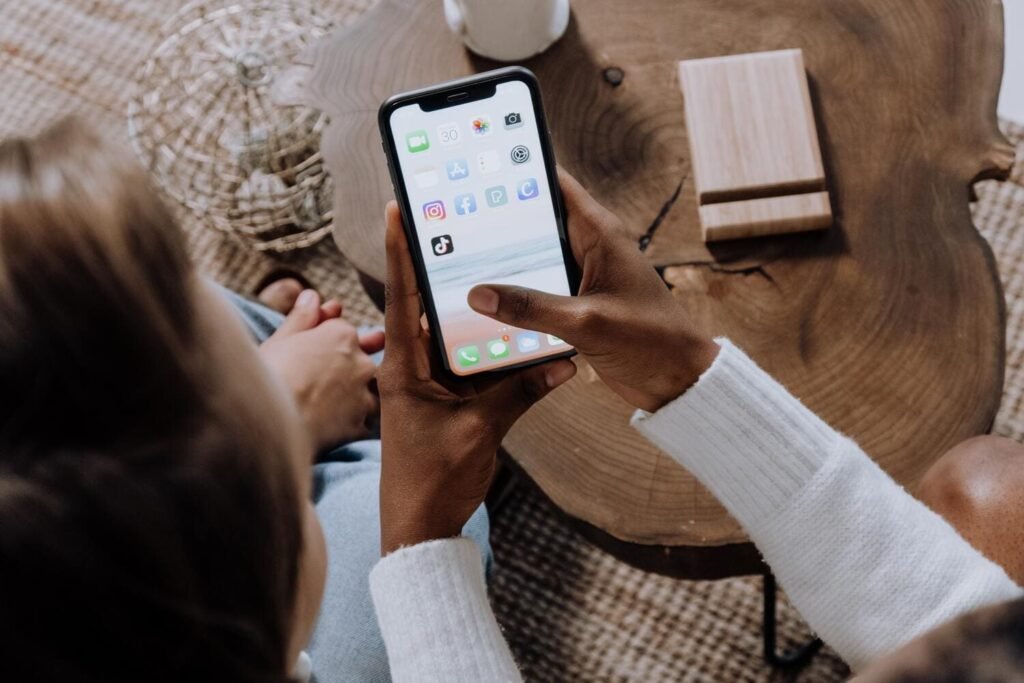
When it comes to marketing your business, Instagram, TikTok, and Twitter are the best platforms to show your company’s principles and employees’ experiences. What that means is, making reels, stories, or TikTok videos. But why are they such successful marketing techniques, and why are they so popular? These are the questions many of those in business ask themselves, and we have the answers. Here are a few reasons why Instagram reels, Twitter stories, and TikTok videos are important to businesses, and how to create them.
Short Videos Are In The “Now”
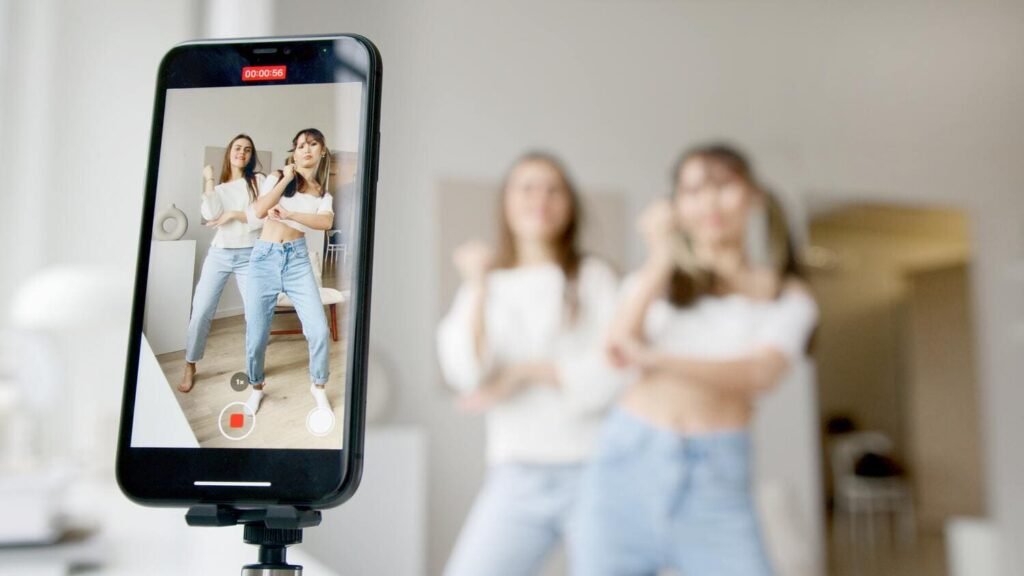
For many people, watching short-format videos are a great pastime. That means people find it easy, to watch a short Instagram reel or TikTok video than watching long videos, or even reading! Short videos are the best time wasters and can even be addictive. Why? They are short enough that they are interesting, and because of the social media algorithm, you can scroll through hundreds of videos in a day, without the presence of adverts.
Of course, every now and then an advert does pop up on someone’s feed, and this is why it’s such a good platform. Some adverts are created in a way that they don’t look like adverts and instead like they’re actual videos, which prompt users to watch the video. So, it exposes the company even more, and this encourages more traffic to your website, and thus more interest. Not only that, but if your customers are well known TikTok influencers, or Instagram influencers, you’ll gain even more traffic, because they’ll review and rave about your products or services!

We Can Help You With Professional Video Editing.
Unlimited Revisions – Whatever changes are needed, send them through and we will Fix them.
Fast Turnaround Time – We are always available to meet the tightest of deadlines when necessary.
Risk-Free Trial – Send your first video editing project to us and if you are not 100% happy with the results we produce, you don’t pay!
It’s Not Just Young People
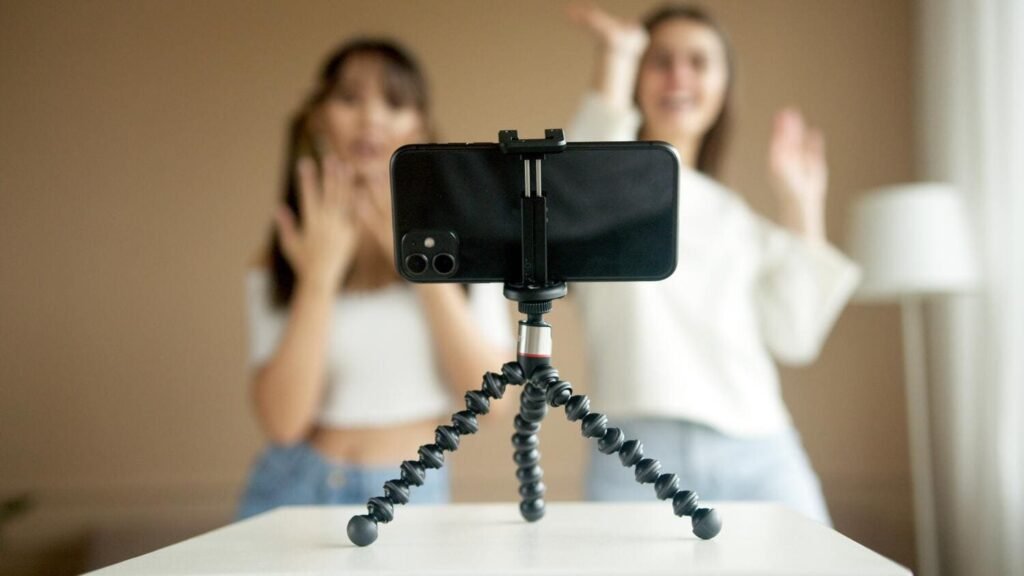
If you ever find yourself scrolling through Instagram reels or TikTok videos, you’ll find that there is a wide range of people who use the platform. From elders in their 50s and older, to teens and even children, so many different types of people scroll through TikTok and Instagram. So, you won’t just be exposed one demographic, you’ll be exposed to them all. It just depends on which feeds the algorithm leads your video to.
The algorithm itself is a little complicated to understand, but if you add the right keywords and hashtags to your video, you can be sure it’ll land on the feed of those who you do want to target. So, for example if you are a makeup company and you add hashtags like #makeup, #getthelook, #makeuptutorial, #makeupforbeginners, and #makeuptransitions, you’ll land on the feed of those who watch makeup videos and makeup tutorials, thus hitting your demographic. Of course, if you use more niche and specific keywords, there may be less traffic, but it’ll ensure that your video is one of the first that your target audiences see. So, Instagram reels and TikTok videos aren’t just for young people.
How Do You Create A Good Instagram Reel?
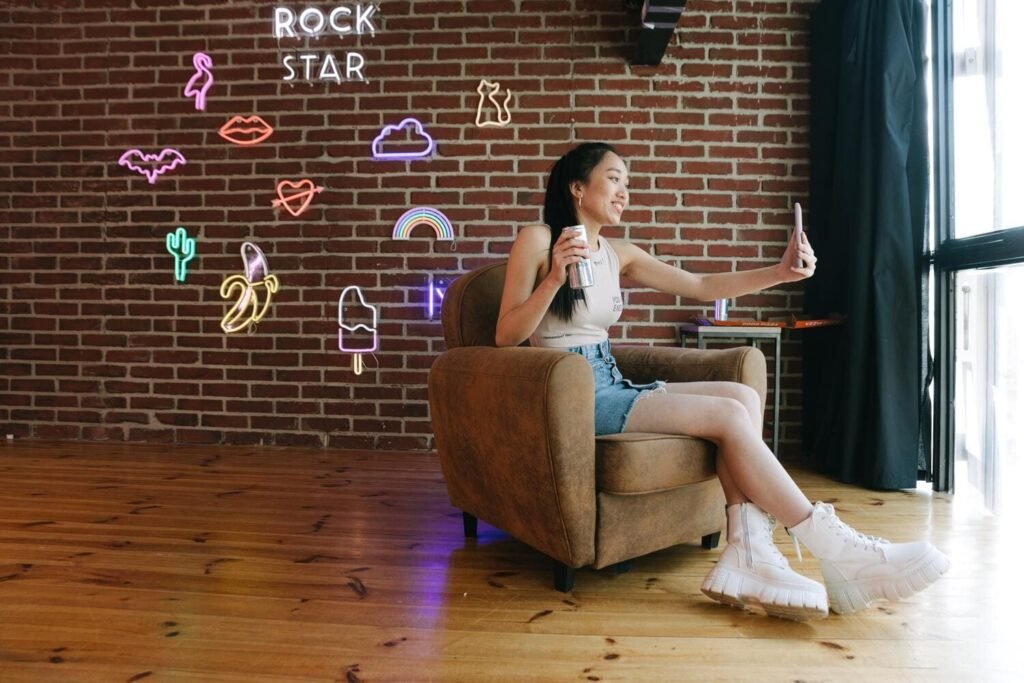
First, start off with the concept of your brand. You need to know what your company values are. Once you establish that, you then need to know how to get that across to people. Think about it this way, there are some mobile games that advertise themselves everywhere, and these adverts are animated stories, that have nothing to do with the game itself. With these adverts, people swipe away from them the moment they see the first image. However, there are now some adverts that even attack this way of advertising. They compare their game’s advert to the ones with animated stories, and this gets them views because it attracts their audience’s attention.
Of course, not all videos need to be like this. After all, you can even create videos that are just to show what the office environment, at your company, is like. There are hundreds of videos that add humour into the workplace, because they’re trying to promote their company. So, you can even create an Instagram reel showing the different personalities in your office, or even a video that jokes about the whole concept of creating marketing videos themselves. It’s all about adding that personal touch, which makes your company seem more approachable.
Remember – It’s In The Edit
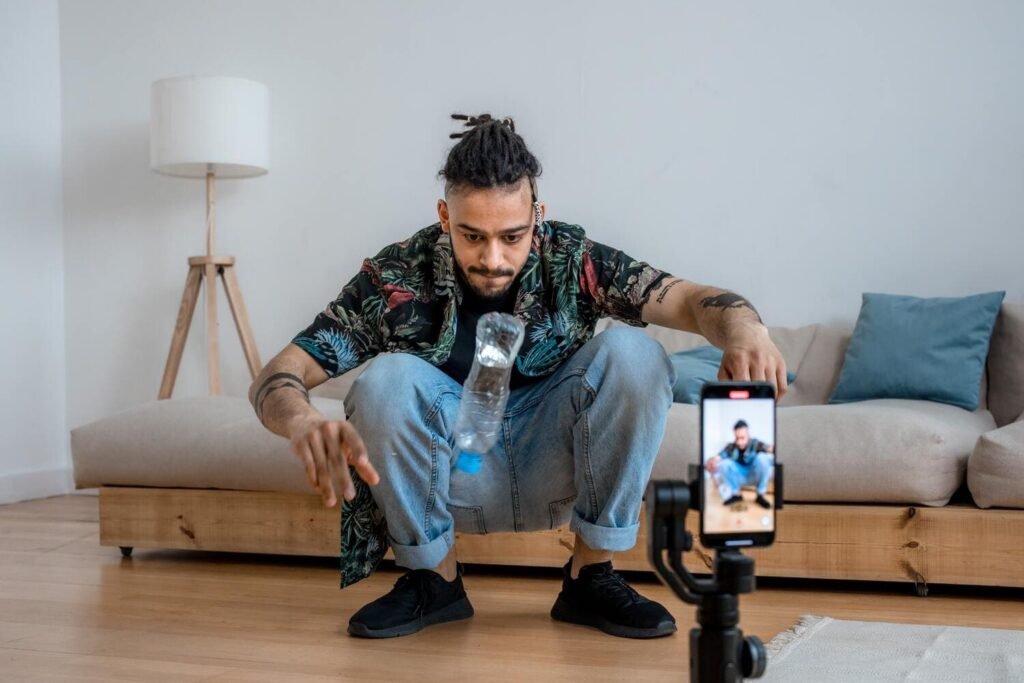
One of the reasons why Instagram reels are so interesting is the edit. It’s the synchronicity of the cut transitions with the beat of the music, and the stark contrast between two clips. So, if you’ve ever seen an Instagram reel or a TikTok video, you may have come across makeup transitions. This is where in the first clip, the person in the video has little or no makeup on, they may look scruffy, or they just look natural, and then through the clever use of match cuts, where the action in the video starts in one clip and ends in another, they are polished, or they look completely different.
This is the reason why Instagram reels are so successful. The suddenness of the transition is what holds an audience’s attention. So, if you’re looking to create videos that grab attention, you will need to learn how to edit your videos, so that the transition looks seamless, and this requires time, attention to detail, and experience.
Trust Cut Pro Media
If you’re too busy to think about creating those Instagram reels, or TikTok videos, then get someone else to make them for you! All you need to do is record your video, send them in to us and we’ll create those seamless transitions that will impress your audience! Our editors are highly experienced individuals, who’ll make sure your video reflects what your company is all about!
Not only that, but our customer service will ensure that your videos are exactly what you want them to be, and if they’re not, we’ll help fix them! And our prices are reasonable too. If you want to know more about our video editing services, check out our website, or better yet, get in touch! Our customer service team are available 24/7, so it doesn’t matter where in the world you are, we’ll do all we can to help you make the best videos for your company.
Related Articles:
5 Best Video Editing Desk Setup Ideas
What Is A Lower Third And How To Use It Correctly?
12 Of The Best TikTok Video Editing Apps To Dazzle Your Followers

